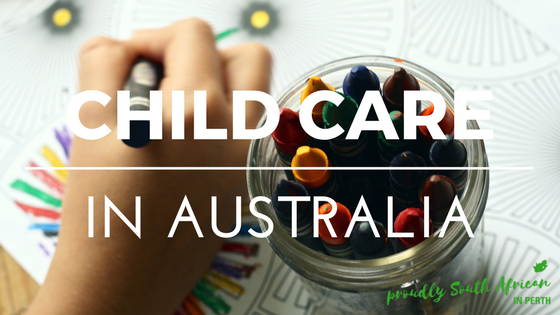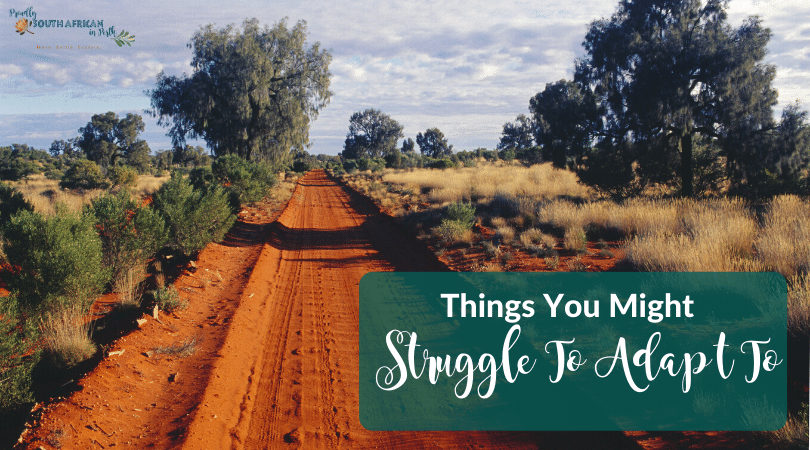One of the most frequent questions I get from new or prospective migrants is:
‘How does child care work in Australia?’
Please note the government policy around childcare changed in 2018 and the benefits mentioned here have been combined into one new payment called the Childcare Subsidy. As such, I’ve removed all links that were in this blog as they are no longer valid.
Arriving in a new country, often not knowing anyone, let alone anyone you can trust with your children, is incredibly daunting.
If you’re a family where both parents need to work to make ends meet or have a comfortable life, then you’ll probably need to find a child care option that works for you.
Coming from the UK to Australia, I found the child care help from the government to be amazing. In the UK you get no government assistance with child care until your child turns 3.
Compare that to Australia where not only is everyone entitled to a child care rebate of up to $7500 per child per year, but there is also a means-tested child care benefit too.
I met a lovely woman recently who told me that when she first arrived in Australia, she had 4 kids and when they discovered the cost of child care, she decided not to work as what she could earn wouldn’t even cover the child care costs. She had no idea that they would have been entitled to any government assistance, and now a few years down the line and she is struggling to find work as she has no recent work experience.
So if I can help someone else avoid this mistake, then this post is worth it!
First, let’s look at some of the different child care options, and then I’ll share some details about the government assistance available. This is not an exhaustive list but they are the most common options.
Day Care
Often called long day care, these are child care centres which are usually open from 6am to 6pm to cater for working parents. They mostly offer half day sessions or full day sessions, not hourly options.
Children range from young babies to age 4, as once they reach age 4 and start pre-primary the year they turn 5, they will move into full time school.
Costs can range from around $80 per day up to well over $200 depending on the day care (don’t panic yet – you get the child care rebate and possibly child care benefit too!).
Family Day Care
Family day cares are run from people’s homes and they can look after up to 7 children at one time. No more than 4 children can be under pre-school age though.
Family day cares will either charge by the day or half day, at similar prices to day care centres, and some will offer hourly options too.
Au Pair
An au pair can be a more cost effective option if you have more than one child.
If you have a live in au pair, they are paid a weekly pocket money of your choosing, but the recommended starting pocket money is $200-300 per week. They also get their own room in your home (they can share a bathroom) and you can provide them with use of your car to take the kids out.
Au pairs are normally from overseas and come to Australia for 6-12 months at a time. They usually want to travel too so the only downside to an au pair is that they will eventually move on and you’ll have to find another one.
Live out au pairs are more expensive as you have to pay them more as you aren’t providing food and accommodation.
Out Of School Hours Care
If your children are in full time school but you also work, then you will need to look at out of school hours care (often called OSH). There are morning and afternoon sessions so you can drop your kids off before going to work and pick them up in the afternoon after work.
OSH usually has tiered pricing so the hour before school starts and the first hour after school are the most expensive and then there is a sliding scale if they stay longer.
Some will provide breakfast and an after school snack, and they also help with homework after school. Some are run at the school and others are run from centres and have a school drop off and after school collection service.
Costs range depending on how long the children are there for, but can cost anything from $10 or $30 per session, or more.
Vacation Care
If you’re a working parent and have got kids in school, you probably panic just thinking about the school holidays.
But all over the country there are vacation care clubs. Some are run by day care centres, others by OSH clubs and others are just vacation care services for example your local leisure centre may run vacation care programs.
Prices are similar to day care but usually you have to provide a packed lunch. Most in WA are around $60-100 per day but this will vary across the country.
There are also different ratios for child care workers to children, depending on your state and the children’s ages. There is a great list of educator to child ratios in Australia here.
Now you’re probably panicking at the mere thought of those prices, but relax! As we live in a first world country, and one that wants to help working parents, the government offers everyone using an approved form of child care a child care rebate. You usually need to be an Australian citizen or a permanent resident to claim most benefits from the government but do check this as the rules can change.
Child Care Rebate
The child care rebate will give you 50% back of your child care costs up to $7500 per child per year. You can either pay your full child care fees upfront and then claim these back at the end of the tax year on your tax return, or you can claim this at the source.
To do this you need to register with Centrelink and get a CRN number for you and each of your children.
By providing your Centrelink numbers to the day care centre or family day care or OSH club, they will claim the rebate on your behalf and you will only pay the difference.
This makes a huge difference to your costs! So for example, if you pay $80 per day and use child care 3 days a week, for 50 weeks per year (they usually shut over the Christmas period), that would equate to $12000. But you can claim 50% of that using your child care rebate, so you really only have to pay $40 per day! (This is a very simple example and the calculations used by Centrelink often are not that straightforward.)
You can find out more about how the childcare rebate works here. The Department of Human Services also shares everything you need to know about child care benefit and your eligibility here.
Child Care Benefit
Not only is everyone entitled to the child care rebate, but some people can also claim child care benefit.
This is a means tested benefit that works on a sliding scale so the less you earn, the more benefit you are entitled to. The government sets the limits for these and currently in 2017 they are:
If you have 1 child attending an approved child care, and earn more than $156,914 between you and your partner, you will not be entitled to any childcare benefit.
If you have 2 children attending an approved child care, and earn more than $162,633 between you and your partner, you will not be entitled to any childcare benefit.
The maximum childcare benefit is payable to families with a joint income of less than $45,114.
So if you earn in between $45,114 and $162,633 and have 2 children, you could be entitled to child care benefit. There are other requirements too – namely you use approved child care, you are responsible for your child care fees, your child is immunised and you meet the residence requirements.
You can find out more about how childcare benefit works here. The Department of Human Services also shares everything you need to know about child care benefit and your eligibility here.
There are some proposed reforms to the child care system being discussed at the moment but they have yet to be passed.
*Update November 2017 – A new Child Care Package is being introduced in July 2018 – find out more about this here.
I hope this has given you an insight into the main options available when it comes to child care in Australia. Do you use any of these forms of child care? Let me know what works for you in the comments!






4 Comments
Christine Vorster
18th July 2017 at 3:25 pmThank you so much for this insightful article. Wanting to move to Australia child care will be one of the most important facts we have to consider.
Reeva Cutting
18th July 2017 at 3:52 pmThanks Christine 🙂 Glad you found it useful!
Kelly Jade Thomson
13th October 2018 at 8:55 pmHi Reeva.. do you know anything about the residency requirements for the child care subsidy? As we are probably coming over on an employer sponsored visa which means we won’t have Perm Residency immediately. Thank you 🙂 I’m loving your website, it’s really helping during this transition phase!
Reeva Cutting
16th October 2018 at 2:31 pmHi Kelly,
On the Centrelink website it says:
“You or your partner must be living in Australia and:
have Australian citizenship
hold a permanent visa
hold a Special Category visa, or
hold a certain temporary visa type
You may also meet the requirements if either:
you or your partner are a student from overseas, sponsored by the Australian Government to study in Australia
you’re in hardship, or special circumstances apply”
Check out this calculator as this might give you an answer:
https://www.centrelink.gov.au/custsite_pfe/pymtfinderest/paymentFinderEstimatorPage.jsf?wec-appid=pymtfinderest&wec-locale=en_US#stay
Generally people on temporary visas are ineligible for any government subsidies or benefits.